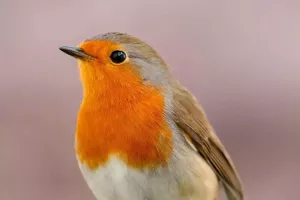While the rest of us have been confined to our respective countries over the last few months, European bee-eaters have been drawing closer to their annual southerly migration. Luckily, international borders don’t matter for birds.
As they near the end of their breeding season, they will soon make the perilous journey south where they will arrive in time for spring. Here are Some Interesting Facts About These Tiny Travelers:
1. How to Spot Them?
European bird identification can be tricky. But amidst the plethora of browns, greys, and subtle color hues, these beauties are easy to spot with their sharp features and richly colored plumage. European bee-eaters are among the most colorful of all the bee-eater birds. They can be identified by their slender form, bright yellow throat, rusty-colored crown, turquoise under-parts, and yellowy backs. The sharp colors starkly contrast against the striking black beak and mask-like eye bands. European bee-eaters display little sexual dimorphism, so it can be difficult to tell males and females apart. Females are slightly more greenish rather than yellow on their upper-parts. Breeding birds are typically brighter than their non-breeding counterparts to enhance sexual attraction. The juvenile birds are also characteristically duller than breeding adults.
2. European Bee-Eater Migration and Distribution
European bee-eaters have a broad geographical distribution and different migration patterns can be observed between groups。 The Palaearctic migrants breed in Southern Europe and parts of Asia. As the breeding season ends around the latter half of July, they begin their migration south – trading the harsh Northern hemisphere winters for the warm, pleasant summers of Southern Africa. As the weather starts cooling in the Southern hemisphere around April, they make their way back to Europe before the next breeding season. Meanwhile, the Intra-African migrants breed in Northern and Central Africa, and migrate south, for the splendid South African summers. They too return north as winter approaches in the South. Some resident groups avoid the migration entirely as they have established small breeding populations in South Africa.
3. The Peculiar Diet of Bee-eating Birds
As their name suggests, bees are the preferred dietary staple of these insectivores. But they also relish butterflies, dragonflies, flying ants, and even wasps! You’re probably wondering how they avoid getting stung. After all, what animal eats bees? They happen to have a very interesting hunting approach. They swoop in from an elevated perch and catch their prey in flight. They then fly back to the perch where they repeatedly thrash the insect against a branch or rub it against a twig until the sting is removed. They are also able to regurgitate indigestible parts as pellets.
4. Built for the Kill
As with all bee-catcher birds European bee-eaters are well adapted for their lifestyle. Their long, curved beaks are sharp and perfect for keeping prey in a tight grip. They have sharp claws for perching on trees and on vertical surfaces where they excavate their burrows. As insect eaters, they have excellent eyesight, which is necessary for precision when catching insects. They are also agile birds, able to move swiftly when hunting. Their wide, somewhat pointy wings and aerodynamic build makes them perfectly suited for long-distance flight.
5. Where Do European Bee-Eaters Live?
They typically nest alongside rivers in the countryside, woodlands, meadows, and even on farmland. In Africa, they can be found in the savannah, forest, shrubland, and grasslands. European bee-eaters often live in arid or semi-arid environments.


